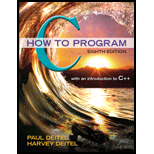
(Recursive Selection Sort) A selection sort searches an array looking for the smallest element in the array. When that element is found, it’s swapped with the first element of the array. The process is then repeated for the subarray, beginning with the second element. Each pass of the array results in one element being placed in its proper location. This sort requires processing capabilities similar to those of the bubble sort—for an array of n elements,
Program Plan-
- Define Header files.
- Define selectionSort()function.
- Define local variables.
- Checking the condition using for() loop till the iteration i is less than 6.
- Display result.
- Checking the condition using if-else() loop.
- Checking the second element with first element.
- Declare main() function.
- Declare local variable.
- Checking the condition using for() loop till the iteration i is less than 6
- Calling selectionSort() function.
- Return successfully to main().
Summary Introduction- (Recursive Selection Sort)A selection sort searches an array looking for the smallest element in the array. When the element is found, it is swapped with the first element of the array. The process is repeated for the sub-array beginning with the second element of the array. Each pass of the array results in one element being placed in its proper location. This sort requires processing capabilities similar to those of bubble sort.
Program Description- The purpose of the program is to implement the recursive selection sort.
Explanation of Solution
Modified program:
/*
*This program to implement the recursive selection sort.
*/
#include<stdio.h>
//recursive definition for selcetion sort
void selectionSort ( int a[], int size, int i, int j)
{
//declare local variable
int temp;
//checking the condtion using if-else loop
if(i==size)
{
//iteration gets executed till value of i is less than 6
for(i=0; i<6; i++)
//Displaying result
printf("%d ",a[i]);
return; //return successfully
}
else
{
//checking the condition using if-else() loop
if(j<size)
{
//checking the second element with first //element
if(a[i]>a[j])
{
temp=a[i];
a[i]=a[j];
a[j]=temp;
}
//function call
//calling function with parameters
selectionSort(a,size,i,j+1);
}
else
{
//function call
selectionSort(a,size,i+1,i+1);
}
}
}
//Define main() function
int main(int argc, char *argv[])
{
//Declare local variables
int arr[6],i,min,j,temp;
printf("Enter the elements of array\n");
//Asking user to enter elements
//Executing for() loop
for (i=0; i<6; i++)
{
printf("Element %d: ",i+1);
scanf("%d",&arr[i]);
}
//sorting the value
selectionSort(arr,6,0,1);
return 0; //return successfully
}
Sample Output-
Sample Output:
Enter the element of array
Element 1:37
Element 2:2
Element 3:6
Element 4:4
Element 5:89
Element 6:8
2 4 6 8 37 89
Want to see more full solutions like this?
Chapter D Solutions
C How to Program (8th Edition)
Additional Engineering Textbook Solutions
Java: An Introduction to Problem Solving and Programming (8th Edition)
Starting Out With Visual Basic (8th Edition)
SURVEY OF OPERATING SYSTEMS
Java How to Program, Early Objects (11th Edition) (Deitel: How to Program)
Thinking Like an Engineer: An Active Learning Approach (4th Edition)
Introduction To Programming Using Visual Basic (11th Edition)
- what is a feature in the Windows Server Security Compliance Toolkit, thank you.arrow_forwardYou will write a program that allows the user to keep track of college locations and details about each location. To begin you will create a College python class that keeps track of the csollege's unique id number, name, address, phone number, maximum students, and average tuition cost. Once you have built the College class, you will write a program that stores College objects in a dictionary while using the College's unique id number as the key. The program should display a menu in this order that lets the user: 1) Add a new College 2) Look up a College 4) Delete an existing College 5) Change an existing College's name, address, phone number, maximum guests, and average tuition cost. 6) Exit the programarrow_forwardShow all the workarrow_forward
- Show all the workarrow_forward[5 marks] Give a recursive definition for the language anb2n where n = 1, 2, 3, ... over the alphabet Ó={a, b}. 2) [12 marks] Consider the following languages over the alphabet ={a ,b}, (i) The language of all words that begin and end an a (ii) The language where every a in a word is immediately followed by at least one b. (a) Express each as a Regular Expression (b) Draw an FA for each language (c) For Language (i), draw a TG using at most 3 states (d) For Language (ii), construct a CFG.arrow_forwardQuestion 1 Generate a random sample of standard lognormal data (rlnorm()) for sample size n = 100. Construct histogram estimates of density for this sample using Sturges’ Rule, Scott’s Normal Reference Rule, and the FD Rule. Question 2 Construct a frequency polygon density estimate for the sample in Question 1, using bin width determined by Sturges’ Rule.arrow_forward
- Generate a random sample of standard lognormal data (rlnorm()) for sample size n = 100. Construct histogram estimates of density for this sample using Sturges’ Rule, Scott’s Normal Reference Rule, and the FD Rule.arrow_forwardCan I get help with this case please, thank youarrow_forwardI need help to solve the following, thank youarrow_forward
- Programming Logic & Design ComprehensiveComputer ScienceISBN:9781337669405Author:FARRELLPublisher:Cengage
 EBK JAVA PROGRAMMINGComputer ScienceISBN:9781337671385Author:FARRELLPublisher:CENGAGE LEARNING - CONSIGNMENT
EBK JAVA PROGRAMMINGComputer ScienceISBN:9781337671385Author:FARRELLPublisher:CENGAGE LEARNING - CONSIGNMENT C++ for Engineers and ScientistsComputer ScienceISBN:9781133187844Author:Bronson, Gary J.Publisher:Course Technology Ptr
C++ for Engineers and ScientistsComputer ScienceISBN:9781133187844Author:Bronson, Gary J.Publisher:Course Technology Ptr  C++ Programming: From Problem Analysis to Program...Computer ScienceISBN:9781337102087Author:D. S. MalikPublisher:Cengage Learning
C++ Programming: From Problem Analysis to Program...Computer ScienceISBN:9781337102087Author:D. S. MalikPublisher:Cengage Learning Microsoft Visual C#Computer ScienceISBN:9781337102100Author:Joyce, Farrell.Publisher:Cengage Learning,
Microsoft Visual C#Computer ScienceISBN:9781337102100Author:Joyce, Farrell.Publisher:Cengage Learning, New Perspectives on HTML5, CSS3, and JavaScriptComputer ScienceISBN:9781305503922Author:Patrick M. CareyPublisher:Cengage Learning
New Perspectives on HTML5, CSS3, and JavaScriptComputer ScienceISBN:9781305503922Author:Patrick M. CareyPublisher:Cengage Learning





